This tutorial will show you how to recover lost data from a corrupted Bitlocker encrypted drive with BitLocker Repair Tool and Hasleo Data Recovery.
The BitLocker Repair Tool can assist you in recovering data from a corrupted or damaged disk volume that was encrypted with BitLocker. It is used especially for the extraction of data from under locked Bitlocker encrypted drive. Here we will show you how to use the BitLocker Repair Tool to recover your data from a corrupted Bitlocker encrypted drive.
The BitLocker Repair Tool (Repair-bde) is a command-line tool included with Windows 7, Windows Server 2008 and later operating systems. So normally we don't need to download it, but if you can't find it in your windows, you can download it from the link below.
Download BitLocker Repair ToolAfter downloading and installing the BitLocker Repair Tool, now you can use it to help access encrypted data if the hard disk has been severely damaged. To use this command-line tool, first make sure the following conditions are true.
Now you can use the commands below to Repair corrupted Bitlocker encrypted drive depending on what you would like to do. In these commands, "E" is the Bitlocker encrypted drive and "F" is a local drive for where to extract the data from the encrypted BitLocker drive.
1. Repair corrupted Bitlocker encrypted drive using Bitlocker password:Open an elevated command prompt, type the command below, press Enter, type the Bitlocker password for this encrypted drive when prompted, then press Enter.
repair-bde E: F: -pw -F
2. Repair corrupted Bitlocker encrypted drive using Bitlocker recovery key:Open an elevated command prompt, type the command below, then press Enter. In this command, "111111-111111-111111-111111-111111-111111-111111-111111" is the 48 digit BitLocker recovery key for the encrypted BitLocker drive.
repair-bde F: E: -rp 111111-111111-111111-111111-111111-111111-111111-111111 -F
3. Repair corrupted Bitlocker encrypted drive using Bitlocker startup key:Open an elevated command prompt, type the command below, then press Enter. In this command, "H:\StartupKey.BEK" is the location that the startup key has been saved or copied to.
repair-bde F: E: -rk H:\StartupKey.BEK -F
Hasleo Data Recovery is a professional BitLocker Data Recovery software which can help you recover deleted or lost files from a healthy, inaccessible, formatted, failed, damaged, corrupted, deleted or lost Windows BitLocker encrypted drive. If the BitLocker Repair Tool is not able to help you recover the lost files, we recommend that you try Hasleo data Recovery, and here we will show you how to recover data from corrupted Bitlocker drive with Hasleo Data Recovery.
Download, install and run Hasleo Data Recovery. And you will see a screen with many options of recovery. Please select BitLocker Data Recovery mode.
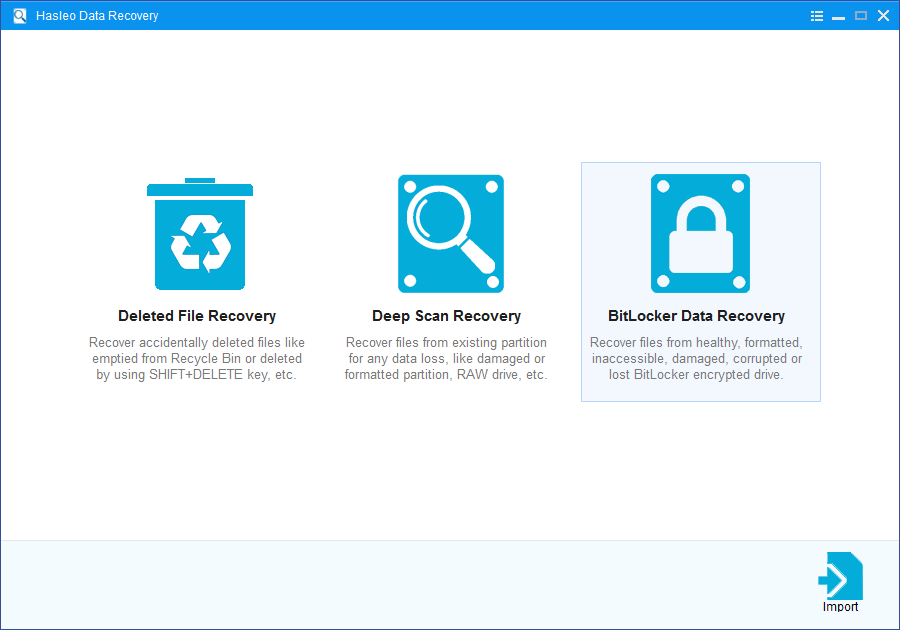
1. Please select the drive where you lose your files, then click "Scan" button to find all BitLocker encrypted partitions on the device.
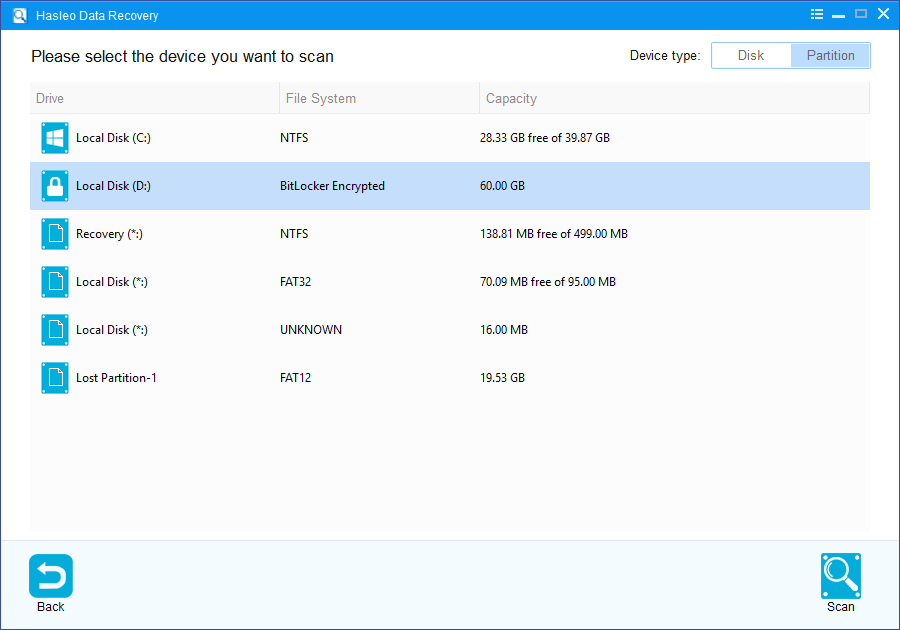
2. A pop-up window will appear asking you to enter the BitLocker password or 48-digit BitLocker recovery key. If you don't want to enter the password or BitLocker recovery key here, just click the "Skip" button to skip it.
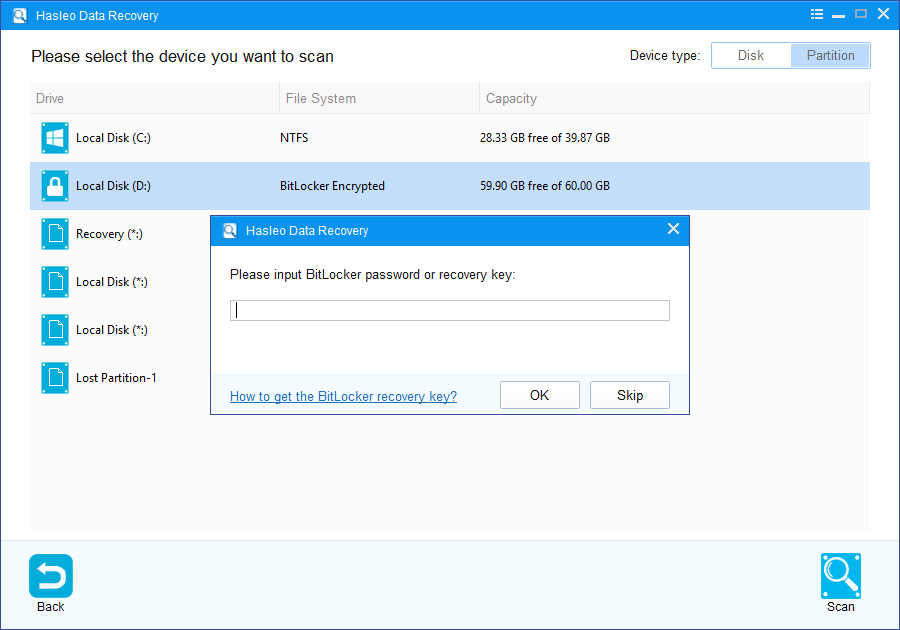
3. Hasleo Data Recovery will list all found BitLocker encrypted partitions on the target device. If you have entered the password or BitLocker recovery key in the previous step, the password status will show whether the password or BitLocker recovery key matches this partition.
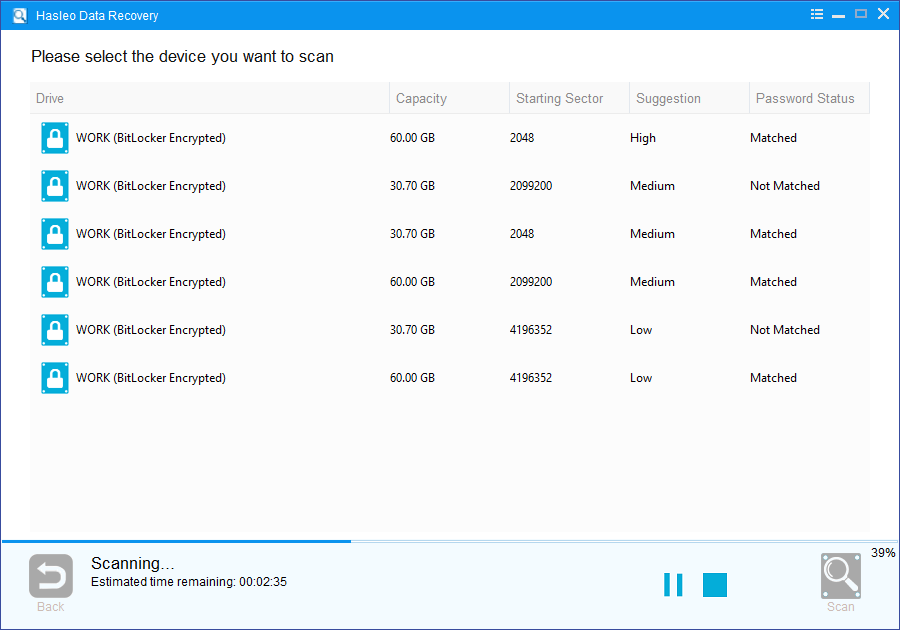
4. Double click the BitLocker encrypted partition you want to recovery data from. If you have previously entered the password or BitLocker recovery key and the the password or recovery key matches, Hasleo Data Recovery will start scanning lost files. Otherwise, a pop-up window will appear asking you to enter the password or BitLocker recovery key. Enter the password or recovery key and then click "OK" button, Hasleo Data Recovery will start scanning lost files if the password or recovery key matches.
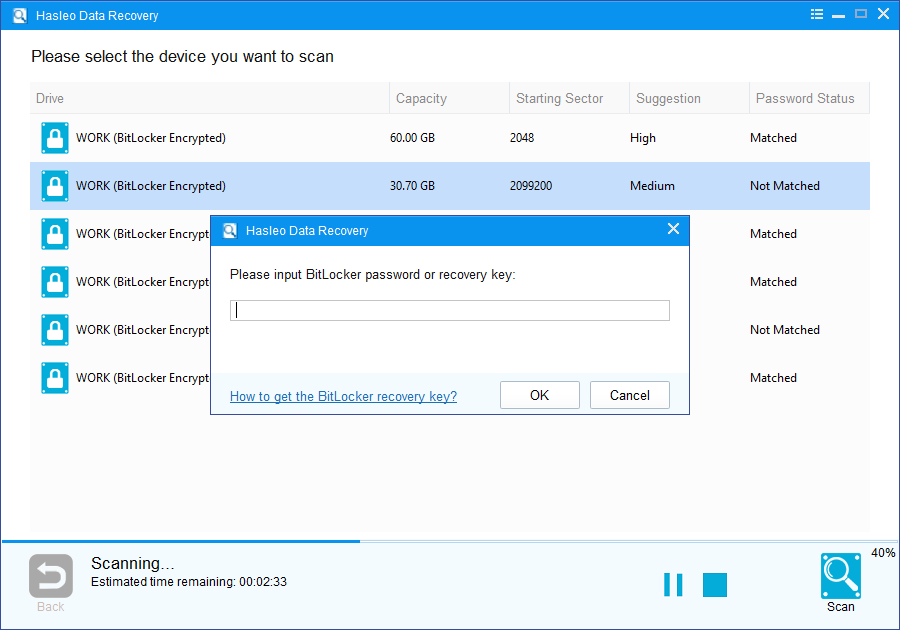
There will be a list of files found by the software, you can preview found files by path and types. Select the files you want to recover and click "Recover" button to save them. If some files are not found, please click "Deep Scan" button to start the Deep Scan Recovery process, deep scan takes more time, but can find much more lost files.
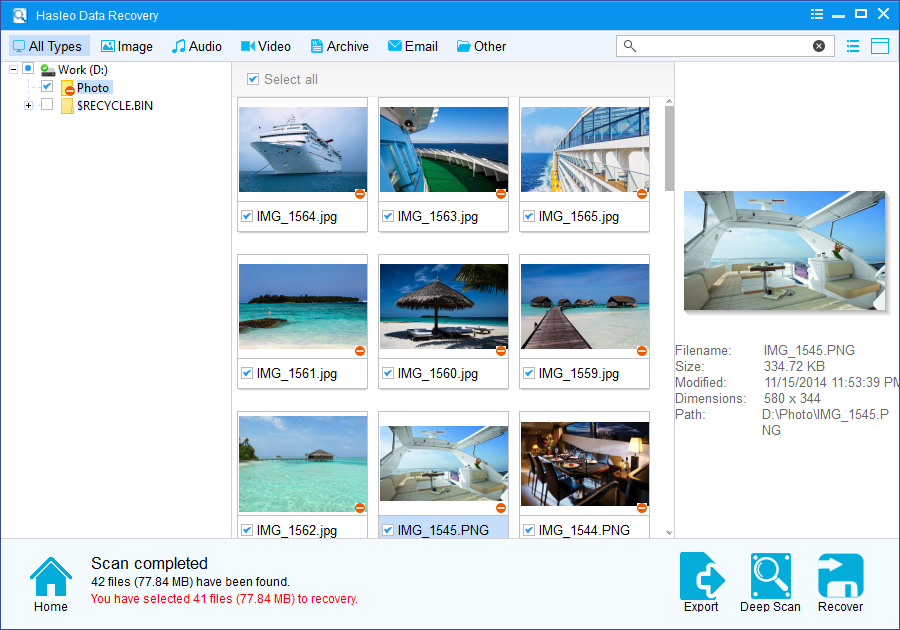
Please note that:
1. You must enter the correct Bitlocker password or the 48-digits Bitlocker recovery key to successfully recover data from a BitLocker encrypted drive.
2. If the metadata area of a BitLocker encrypted drive is severely corrupted, you will not be able to recover data from this partition even if you have the correct Bitlocker password or the 48-digits Bitlocker recovery key.
3. Don't save the recovered files to the partition where your lost files originally located. This prevents your data from geting overwriten.
4. You can export/save the scanning results for later or next recovery.